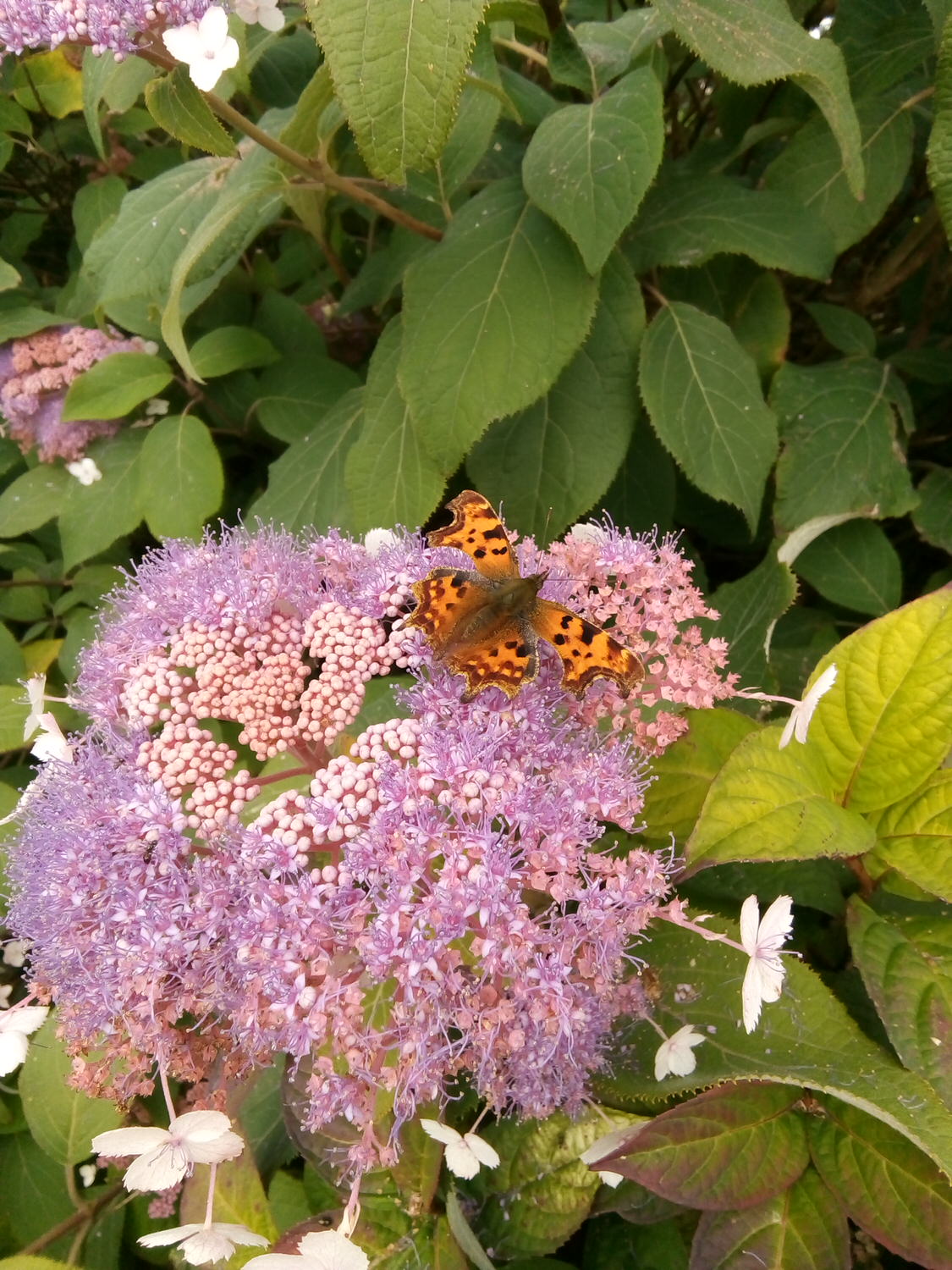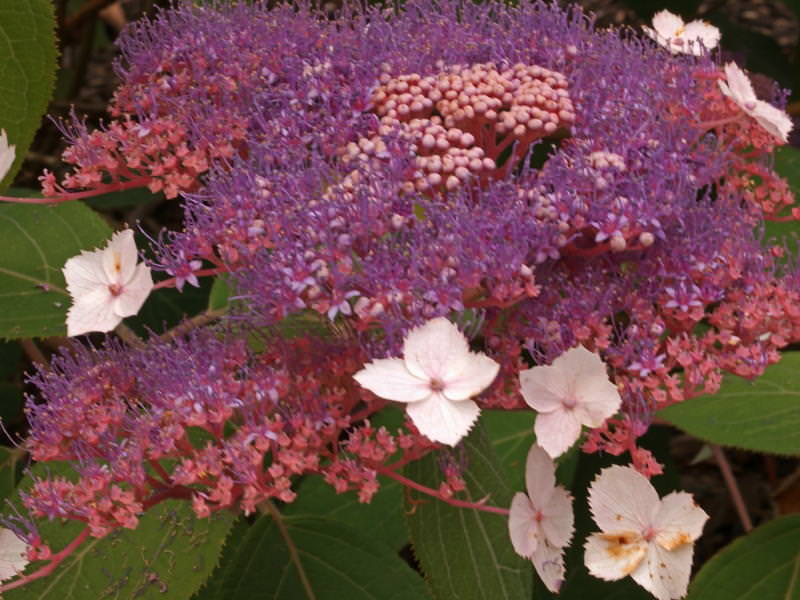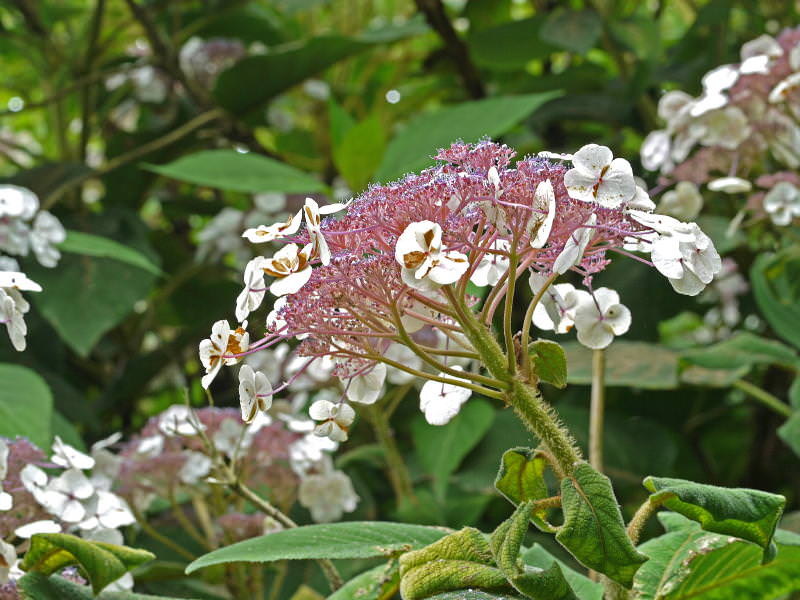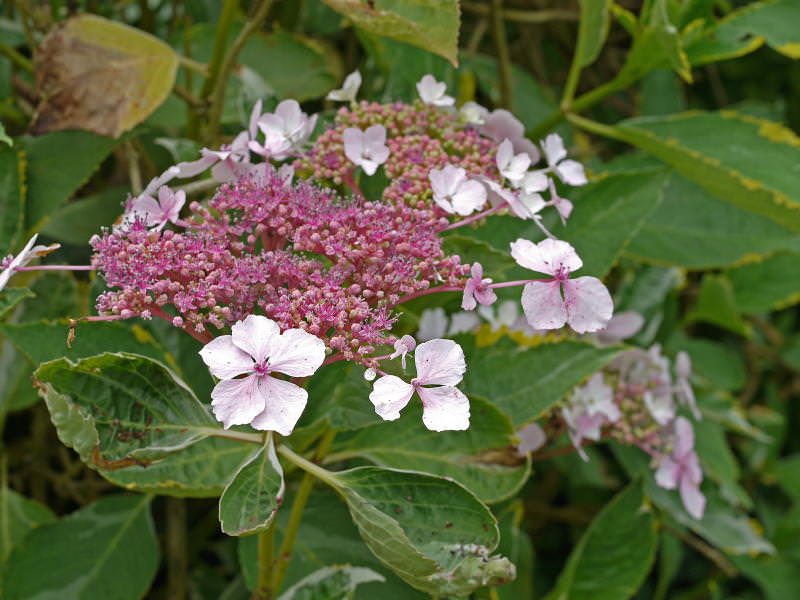This aspera takes up a lot of room; its spreading habit makes it much wider than it is tall. It...

Native of China, Taiwan and the Himalayas, this species is very variable in eventual size and in leaf and flower colour. They all have large, rough, hairy leaves and hairy stems. They have wide flat flower heads made up of a central area of fertile florets. The colour of these may vary from wishy-washy blue to an intense deep blue depending on the form or cultivar. The fertile florets are surrounded by a circle of mauve to purple sterile florets. An excellent range of cultivars are coming on to the market.
Categorising the sub species of H. aspera has been open to interpretation since first discovered. To avoid confusion when listing sub species in the Derby collection, Hydrangea Derby is using a species profile written by Maurice Foster of White House Farm Garden in Kent, in 2014 for The Plantsman magazine. In the 2014 article these sub species are recognised: subsp aspera; subsp robusta; subsp sargentiana; subsp strigosa; Kawakamii Group and Villosa Group.
Aspera only require pruning for shape and size. They can reach up to 3m in height and width. Cut off deadheads for neatness.

This aspera takes up a lot of room; its spreading habit makes it much wider than it is tall. It...

Late flowering with flowers having fertile florets are deep violet contrasting with the brilliant...

Because of its size, this is not a plant that will sit neatly in a small border. It prefers...

A late flowering form with large very hairy leaves and stems. The flower heads are large with...

Hydrangea aspera Villosa Group is a very variable group of taxa. Some are very good but others...

This aspera has given us a pleasant surprise this year. After not performing well for a number of...
